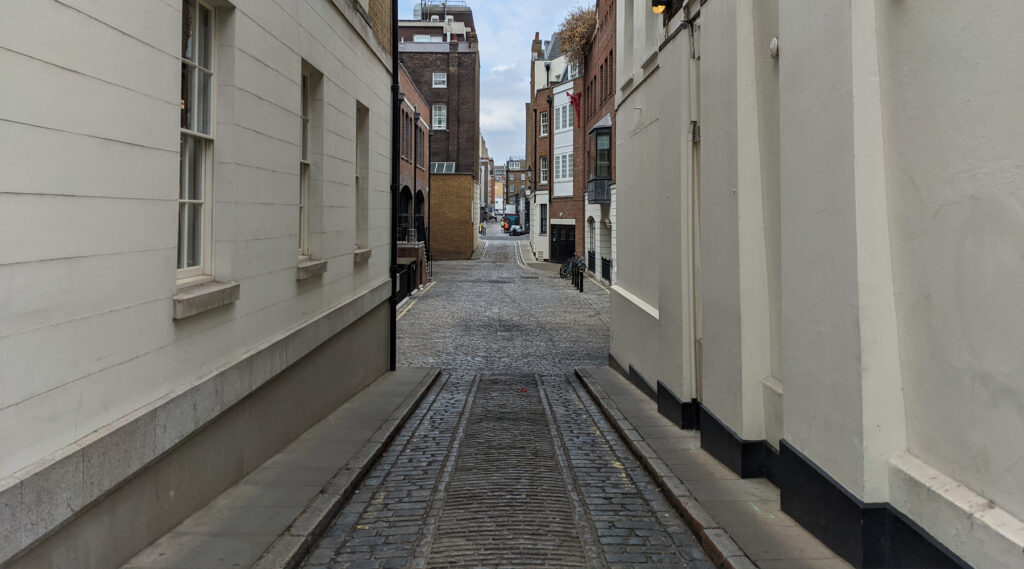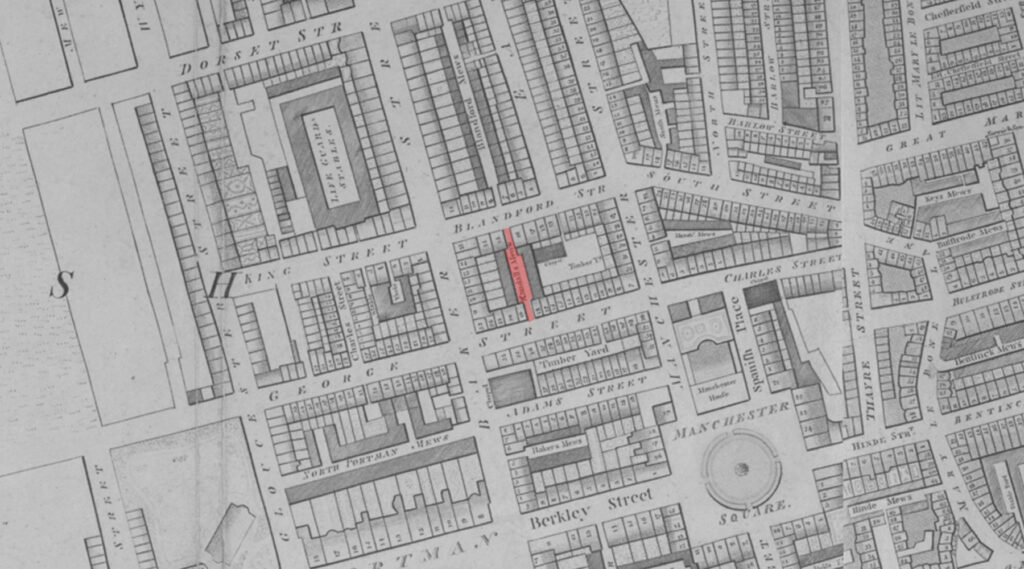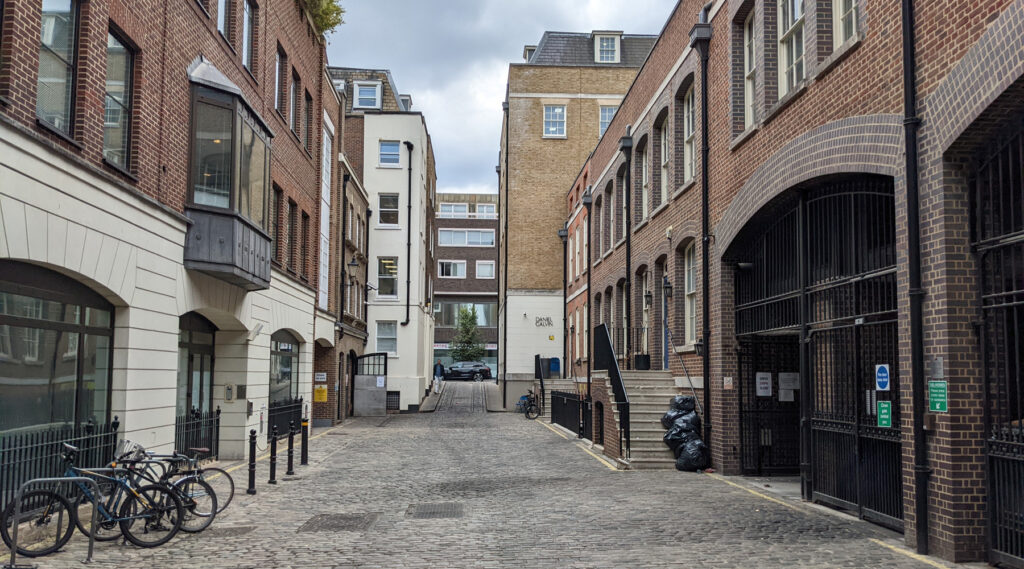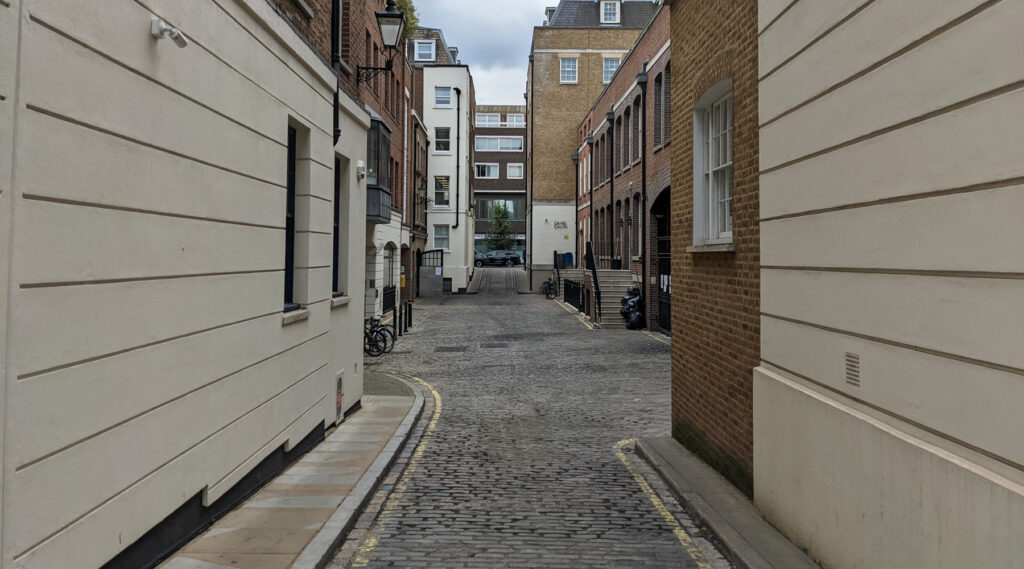This is an alley that passes through a block to the north of Oxford Street, and half of the block is owned by a single family.
The area owes its origins to Sir William Portman, Lord Chief Justice to King Henry VIII, who leased the land in this part of London when it was still fields. Fields it remained until the 18th century, when the expanding London saw this area developed as housing.
The block that Kendall Place passes through was built in the 1770s, as a block of houses with back gardens, and a passage behind for stables and horses. Originally called Kendall’s Mews, it changed its name at some point in the 1950s to Kendall Place. The name change may have coincided with the time that the 8th Viscount Portman had to sell a large chunk of the estate to pay death duties, which took place in 1951.
In fiction, the alley is quite significant, as it’s been suggested that this is the back alley that is likely to be the one that backs onto a row of houses that faced Sherlock Holmes’s flat at 221B Baker Street.
The alley, although unnamed in the novels, is likely to be the one that Holmes and Watson used to get into the house facing 221B Baker Street where the assassin, Colonel Sebastian Moran is hiding intending to shoot Holmes from across the street. The story, The Adventure of the Empty House is the one that marked Holme’s return after his apparent death at the Reichenbach Falls in Switzerland.
The eastern side of the alley is a block of housing and shops that, for the past 50 years, has been owned by a single family — as the George Blandford Estate. Oddly considering its name, the George Blandford Estate is actually owned by the Loftus family, who have been buying property in the Baker Street area for the past 60 years. The name comes from Blanford Street on the northern border of the estate.
The family isn’t just into property, as they also founded the British watchmaker, Accurist. It remained a family company until they sold it in 2015.
Externally, the block looks like a typical Georgian estate with rows of three-storey houses and shops, but sitting behind the houses, and with its main frontage in the alley is an entirely modern infill of a building.
Likewise, while the western side looks from the outside to be a cluster of refurbished buildings in a variety of architectural styles, but is in fact a single office development that was built in 2002 to look as if it was an older row of buildings.
Until the 1980s, this is what I would have described as a classic mews, lined with small homes as a legacy of when they were stables. But now, while the charm of the cobbled (sett) paving is still there, the rest of the alley is entirely modern in design.











Very interesting and nice photos! Thank you 🙂